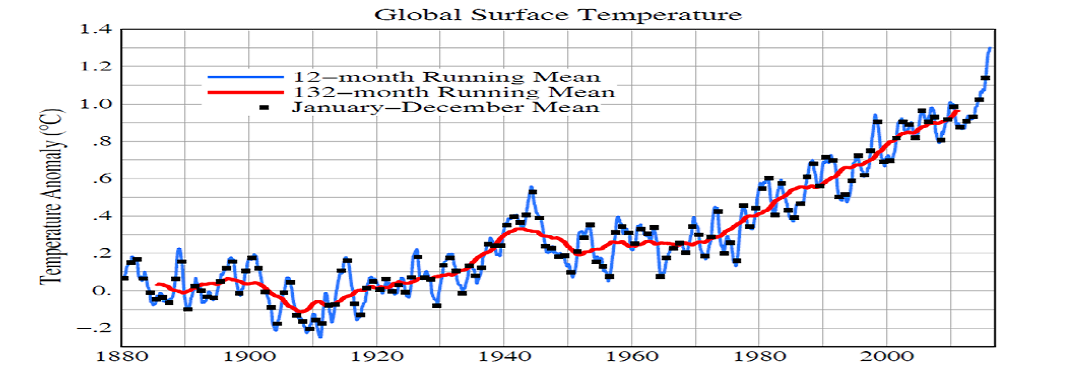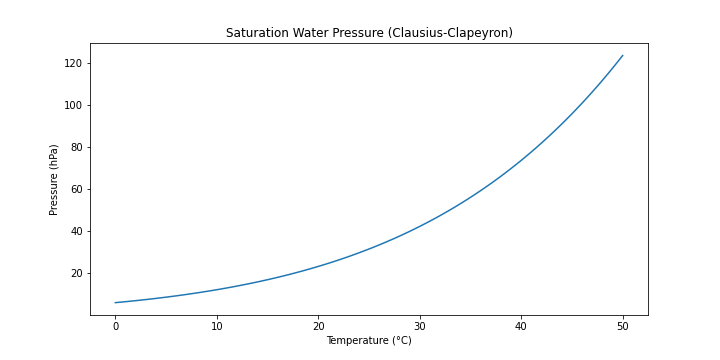Climate Change Recap, Part 1: Causes and Effects
 |
|---|
| Global air temperature relative to 1951-1980 - (Credit: NASA - Goddard Institute for Space Studies) |
I decided to go back to dealing with the atmosphere and climate change, albeit occasionally. The topic is complex and has several aspects beyond the scientific one as we all know by now. Even if we do not yet have a dramatic evidence of the problem of global warming at our latitudes, we are still reminded from time to time in international meetings that a risk exists and not too far in the future. The fear of pandemics and climate disasters has replaced that of the nuclear conflagration of the Cold War. Some highly respected scientists, in particular Dr. James Hansen of the Goddard Institute for Space Studies, argue that there is a gap between what is known now at a scientific level and the awareness of the population and politicians about the dangers of global warming. Without this awareness it will be impossible to take the necessary measures with the consent of the populations to avoid the climate disasters that await us. In this article I only intend to frame the problem from a physical aspect and then discuss the solutions proposed by international organizations, scientists and governments.
It is known that the atmosphere is part of a larger system that also includes the land and oceans. Each of these subsystems interacts with the others through exchanges of energy and matter in a series of cyclic reactions. The equations that describe these exchanges are not simple both due to the number of variables involved and due to the phenomenon of feedback, positive or negative, whereby the effect of a physical phenomenon acts on its cause. Global warming consists in the increase in the amount of heat stored by the atmosphere and oceans and therefore in the increase of their mean temperature. The international scientific community argues, now almost unanimously, that this is due to the presence of greenhouse gases in the atmosphere. These gases, mainly carbon dioxide ($CO_2$) and methane ($CH_4$), do not allow the infrared radiation emitted by the earth to pass through the atmosphere which is then reflected back towards the earth’s surface, increasing its temperature. Not all carbon dioxide in the atmosphere is of anthropogenic origin, however paleoclimatology studies show that this has increased considerably since the beginning of the industrial revolution, at the end of the 18th century, going from 280 ppm (parts per million) to 387 ppm in 2009, with an increase of 2 ppm per year.
 |
|---|
| Atmospheric $CO_2$ at Mauna Loa Observatory - (Credit: NOAA) |
Much of the $CO_2$ of anthropogenic origin is produced by the combustion of gaseous, solid or liquid hydrocarbons. The combustion of a hydrocarbon produces a molecule of $CO_2$ for each carbon atom contained in the hydrocarbon. The mass of $CO_2$ produced is therefore always greater in weight than that of the hydrocarbon before the combustion. From a liter of gasoline, weighing about 700 grams per liter, after combustion in the air, a mass of $CO_2$ equal to about three times that of gasoline, i.e. 2.1 kg of $CO_2$, is produced. The carbon dioxide produced in this way remains in the atmosphere for millennia before being absorbed by the sea or land. Methane ($CH_4$) is also a greenhouse gas and is mainly produced by natural gas extraction plants and livestock farms.
What are the consequences of the average temperature increase? For the atmosphere, the increase in temperature leads to a greater amount of water vapour in the air since the saturated vapor pressure depends on the temperature, as shown in the picture.
 |
|---|
| Saturated Water Pressure (Clausius-Clapeyron) |
This means on the one hand that the phenomena of drought in some areas of the planet are destined to increase as the atmosphere is able to retain a greater amount of water and on the other hand that the atmosphere has a greater amount of water available to drop as meteorological precipitations. So the climatological forecasts are less rainfalls, or drought, in some areas of the planet and heavy rains or floods in other areas. In addition to the intensification of the precipitations, we must also consider other phenomena such as the melting of alpine glaciers and desertification.
As for the seas, the greenhouse effect results in an accumulation of heat due to the large thermal capacity of the water and consequently in an increase in the average temperature of the seas. The increase in sea temperature is slow due to the enormous mass involved but is at the origin of the erosion of the polar caps. The melting of the ice of the south pole and of Greenland cause the sea level to rise and the coastal areas to be flooded.
 |
|---|
| Eurydice close to a rock, formed in the Jurassic period, eroded by the sea, Sardinia |
The circulation of sea currents could also change. For example, the Gulf Stream could no longer reach the coasts of the British Isles, decreasing its temperature in a planetary context that is, however, warmer than the current one.
From the analysis of the problem under the geophysical aspect, if we accept what is given to us for certain by the international scientific community, we must move on to frame the social, economic and political aspect. It is a shared opinion that climate change can only be tackled on a planetary scale and that therefore the agreement of all the states, in particular the most industrialized countries and those that have the greatest weight in the production of greenhouse gases, is needed. The solutions are not simple and politicians are not always able to understand the validity of certain choices and even less to make decisions not shared by their electorate or by economic lobbies. We will see in a next post what solutions are on the table and how we are involved in them as citizens who are both originators and victims of climate change at the same time.
P.S.: the amount of $CO_2$ in the atmosphere in 2022 is 418 ppm, an increase of 31 ppm in less than 13 years since the time the post was written, 2.4 ppm per year.
Climate Change Recap, Part 2: Solutions